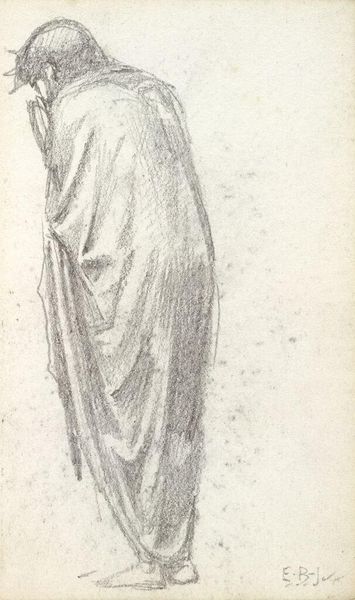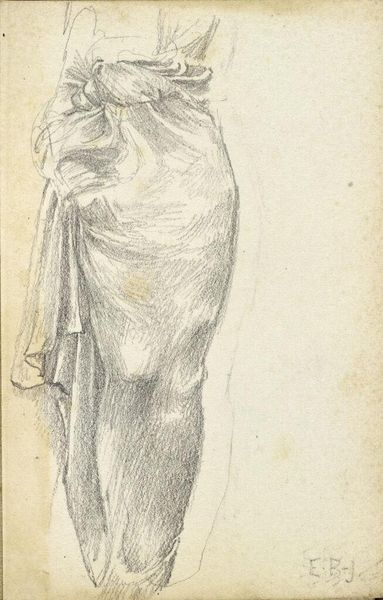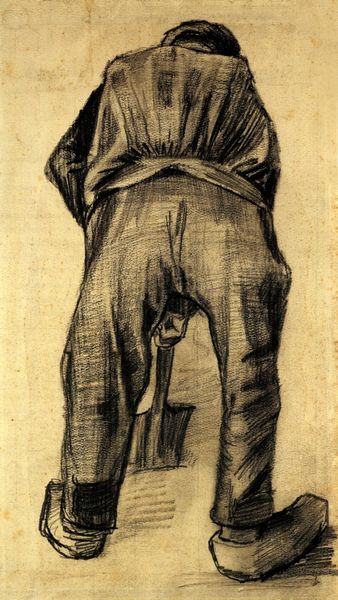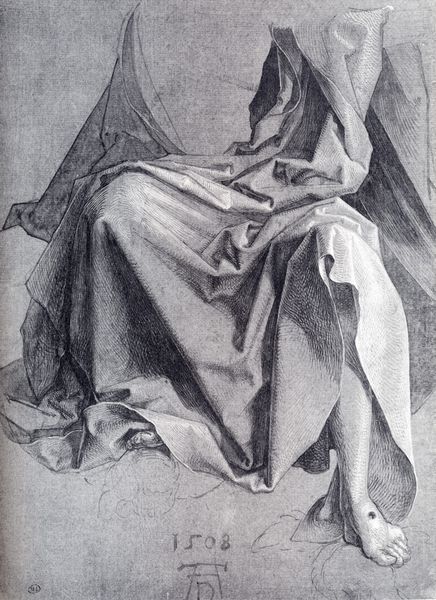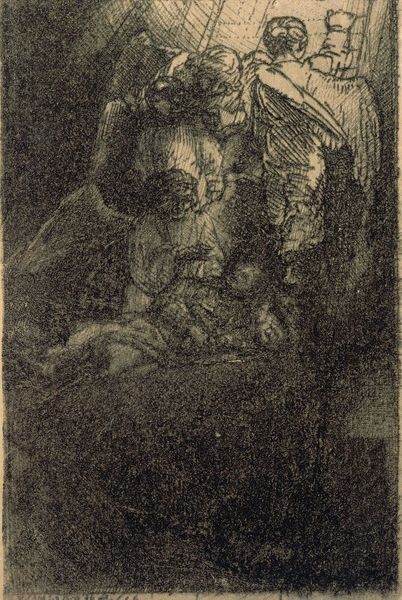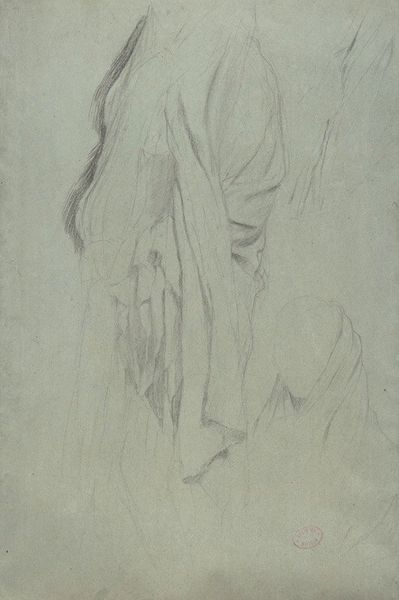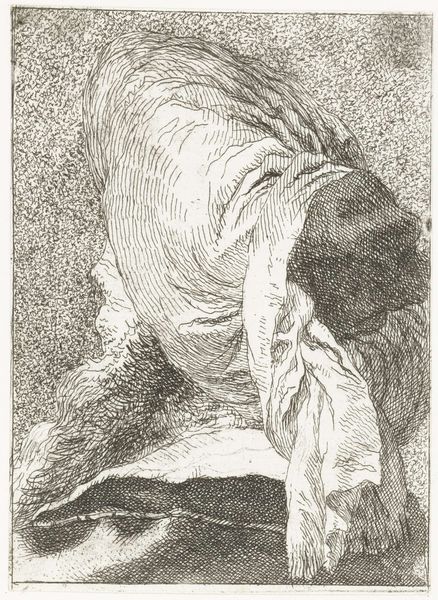
drawing, charcoal
#
drawing
#
charcoal drawing
#
figuration
#
11_renaissance
#
christianity
#
charcoal
#
history-painting
#
northern-renaissance
Dimensions: 24 x 16 cm
Copyright: Public domain
Curator: This compelling drawing, rendered in charcoal, is entitled "Moses" and it dates back to around 1511. The artist responsible for it is Matthias Grünewald, a master of the Northern Renaissance. Editor: It strikes me immediately with its gravity. The sheer weight of the figure, amplified by the heavy drapery, communicates a sense of immense responsibility or perhaps even burden. The upward gaze… it’s as if he is pleading or seeking guidance. Curator: Exactly. Grünewald crafted this drawing during a period of tremendous religious and social upheaval, right before the Reformation took hold in Northern Europe. Art served a vital social purpose during this time to guide morality. Representations of iconic biblical figures, such as Moses, sought to embody particular moral, religious or philosophical ideals for viewers in public and domestic life. Editor: Absolutely, Moses becomes this powerful symbol— the lawgiver, the intermediary between God and humanity. And observe his hands: one bearing the tablets of the law, and the other pointing up. This suggests not just law, but also divine connection. In this respect, Grünewald captured a very palpable tension in charcoal, between human obligation and spiritual aspiration. Curator: Moreover, let's think about charcoal as a medium. Its impermanence—its ability to be easily smudged or erased—may reflect the ephemeral nature of earthly laws or the fleeting grasp of divine wisdom. Grünewald worked for a Church establishment facing growing crisis and whose claims over absolute moral authority was fracturing. One reading of this charcoal Moses might suggest doubt over its ability to maintain itself in that cultural environment. Editor: That is astute. Looking at it again through that lens, the charcoal medium itself amplifies that fragility. In terms of iconographic details, Grünewald subtly incorporates the Hebrew letters in the stone inscription – perhaps a nod to a more profound and direct relationship with the sacred text, as was being pushed during the rise of Humanism in Europe. Curator: In summary, Grünewald's "Moses," despite being a relatively small charcoal drawing, carries significant historical and political weight. The artwork, while seemingly focused on the spirituality of a biblical figure, it invites viewers to contemplate the power, durability, and ongoing reinterpretation of morality, spirituality and laws themselves. Editor: It remains striking how Moses as this symbol—this human yet divinely connected figure, is not only delivering, but yearning. This combination resonates profoundly, regardless of the shifting sociopolitical realities.
Comments
No comments
Be the first to comment and join the conversation on the ultimate creative platform.
